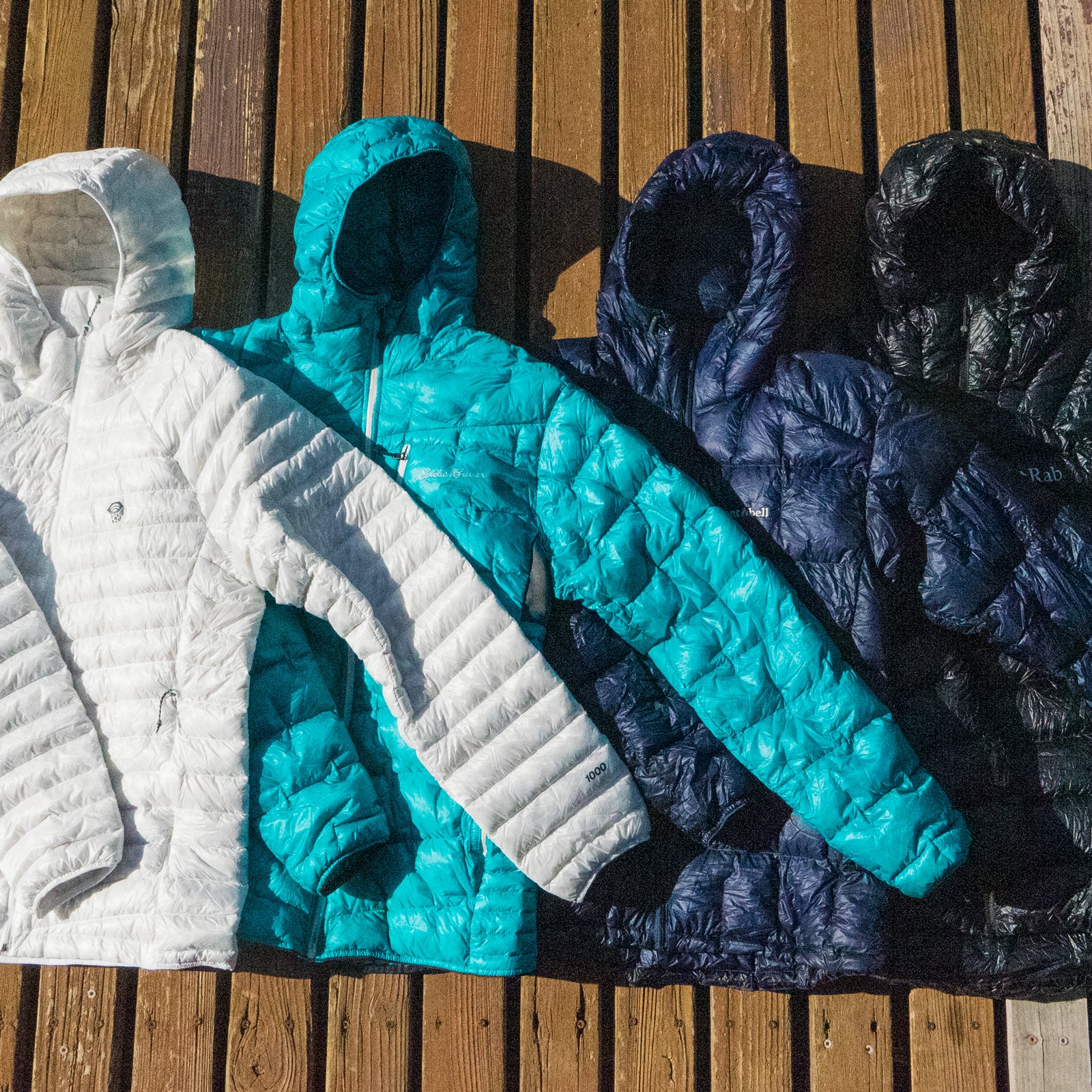Until recently, 1,000-fill down has been a rare commodity. Jackets that included it were╠řalways few and far between. But this year, there will be more of it than normal, giving weight weenies new options for ultra-packable warmth. DonÔÇÖt get too excited, though: quantities will be limited, and prices will be steep╠řrelative to what weÔÇÖre used to.╠řMountain Hardwear, for example, initially only made╠ř2,000 of its flagship╠ř ($375), whereas╠řyou can likely snag its╠řbestselling , and for $50 less. Is╠řthe extra fill power, and two-ounce weight savings, really worth the hunt?
Down Math
Calculating fill power is a helpful way to judge the weight-to-warmth factor of different down jackets. Fill power is a measurement of the quality of the down, and itÔÇÖs╠řthe approximate╠řvolume in cubic inches of one ounce of down.╠řSo one ounce of 650-fill down takes up approximately 650 cubic inches of space, one ounce of 850-fill down works out to 850 cubic inches, etc. ItÔÇÖs important to note that fill power does not necessarily equate to warmth. HereÔÇÖs what the numbers mean: Because 1,000-fill╠řdown is high in volume, itÔÇÖs╠řnot as╠řdense as other fills╠řand has more room to trap air within the plumage. A jacket with╠ř650-fill down takes up less volume than one with 1,000-fill down,╠řso itÔÇÖs denser and has less space for warm air. But when it comes to warmth, what really matters is╠řhow much╠řof that down is stuffed into the jacket.
WeÔÇÖll use Mountain HardwearÔÇÖs Ghost Whisperer UL as an example. This╠řjacket features two ounces of 1,000-fill down (this important measurement is╠řfrequently noted╠řalongside the overall weight of many jackets on the product page,╠řthough not every brand lists it), which means the volume of the down is roughly 2,000 cubic inches. Keep in mind that warmth is tied to volume. So a jacket with 2,000 cubic inches of 800-fill down should be just about as warm as an otherwise identical jacket filled with 2,000 cubic inches of 1,000-fill down, like the Ghost Whisperer ULÔÇöthe 1,000-fill version will just be lighter.
But how much lighter? Using a little high school algebra, we can work backwards, dividing╠řthe Ghost ULÔÇÖs 2,000╠řcubic inches of down by 1,000 fill to determine that the down weighs two ounces. How does that compare to an 800-fill jacket? The same 2,000 cubic inches (meaning the jacket is exactly as warm)╠řdivided by 800 fill yields 2.5 ounces. Even a 650-fill jacket of the same warmth weighs only three ounces. In smaller jackets, the weight difference from 1,000 fill to 850 might be minimal, though the difference could be larger in products like sleeping bags, which use tens of thousands of cubic inches of down.
So╠řwhile fill power definitely shaves ounces for those looking to slim down their kit, the weight╠řdifference in many jackets is minor, and real╠řweight savings are╠řlikely to come down to everything around the down. If manufacturers spend╠řbig bucks filling their jackets with 1,000-fill down, itÔÇÖs likely because theyÔÇÖre trying to make them superlight. That means theyÔÇÖll also try to keep the weight of the fabrics, zippers, and other features to a minimum. But if weight is less of a concern, they might boost durability and function and use cheaper down.
How I╠řTested
I took these jackets╠řbackpacking, ice climbing, and backcountry skiing across the West between the fall of 2019 and the summer of 2020.╠řTemperatures ranged from the low fifties╠řto bitter single digits below zero. Given the variety of jackets╠řand their differing warmths, each generally╠řfell into its own optimal activity╠řand temperature ranges. (The latter is a╠řsubjective assessment based on my body, what I was╠řwearing with the jackets, and the activity of the day.)
Mountain Hardwear Ghost Whisperer UL ($375)
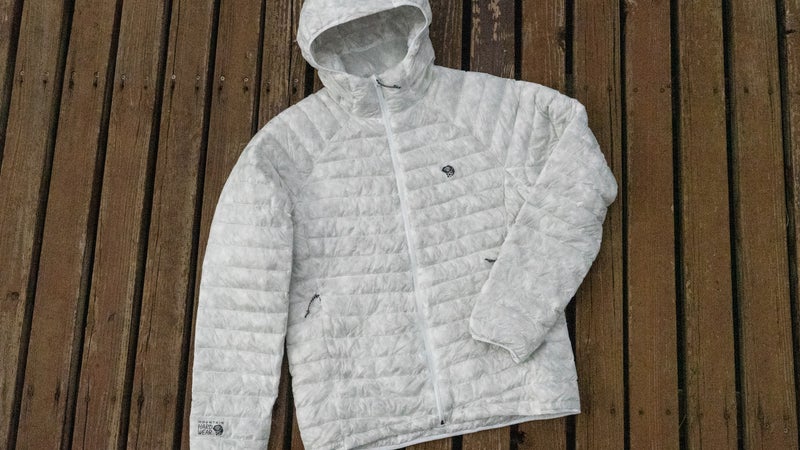
Best For: Nerds obsessed with ultralight tech
Weight: 6.7 ounces (menÔÇÖs medium)
Down Weight:╠ř2╠řounces
Optimal Temperature Range:╠ř50 to 35 degrees Fahrenheit
There may never have been a more fully featured down jacket at this weightÔÇöor╠řat least╠řIÔÇÖve yet to see it. Largely thanks to the featherweight nylon face fabric (or outer layer)╠řthat lends its name to the jacket, the Ghost Whisperer line has been able to claim that title for a while. But the brandÔÇÖs newest iteration swaps out 800-fill down for the primo╠ř1,000 fill and replaces ultralight ten-denier face fabrics with╠řa downright paper-light╠řfive-denier version, bringing the ÔÇÖs weight to that of a billiard ball.╠ř
That╠řlightweight warmth was enough to take the chill off shoulder-season summits or while making breakfast on summer backpacking trips in MontanaÔÇÖs Beartooth Mountains, when╠řtemperatures were in the low fifties. It makes for a toasty midlayer (it fits great under a ski shell) during the colder months, but itÔÇÖs probably not going to be my only puffy on chilly ski tours (adding a parka would be nice for frigid transitions). And at this level of warmth, the difference between the UL and the 8.8-ounce 800-fill version is really only going to be noticed by picky ounce counters. Cost aside, the weight savings may or may not be worth the paranoia that comes from brushing this jacket against a branch. I babied mine and still saw a few small snags while bushwhacking.
╠ř
Eddie Bauer Centennial Collection MicroTherm 1000 ($399)
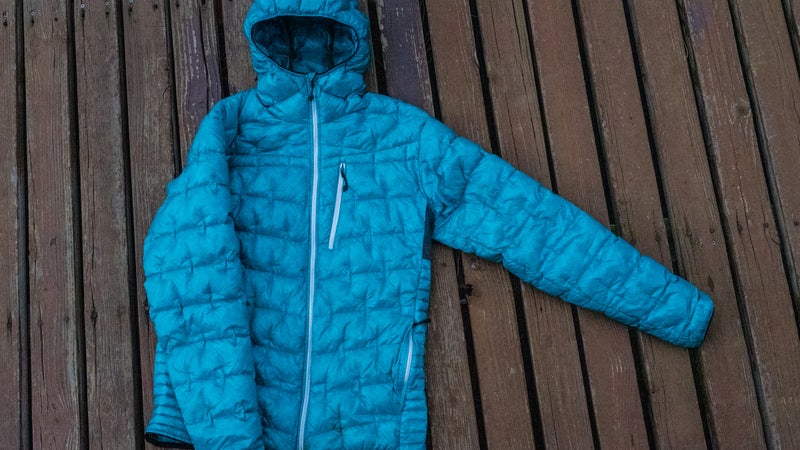
Best For: Moving while bundled up
Weight: 9.6 ounces╠ř(menÔÇÖs medium)
Down Weight: 3.2 ounces
Optimal Temperature Range:╠ř50 to 30╠řdegrees Fahrenheit
The╠ř only features just over an ounce of additional down compared to╠řthe Ghost UL, but Eddie Bauer╠řtook few chances on the face fabric with a sturdy (for this category) 20-denier material. Plus, stretchy fleece panels under the arms boost flexibility and breathability.
This jacket╠řkept me slightly warmer than the Ghost Whisperer. I stayed╠řcomfortable into temperatures in the high forties╠řwithout moving. The underarm panels didnÔÇÖt seem to compromise warmth╠řbut were a welcome feature while moving above the tree line during fall hikes up Bear Peak in Boulder, Colorado,╠řwith early-morning temperatures in the high forties. The face fabric still deserves some caution around sharp objects, but I felt confident jamming it into my backpack or wearing it while walking over and around╠řblowdown.
Mont Bell Plasma 1000╠ř($439)
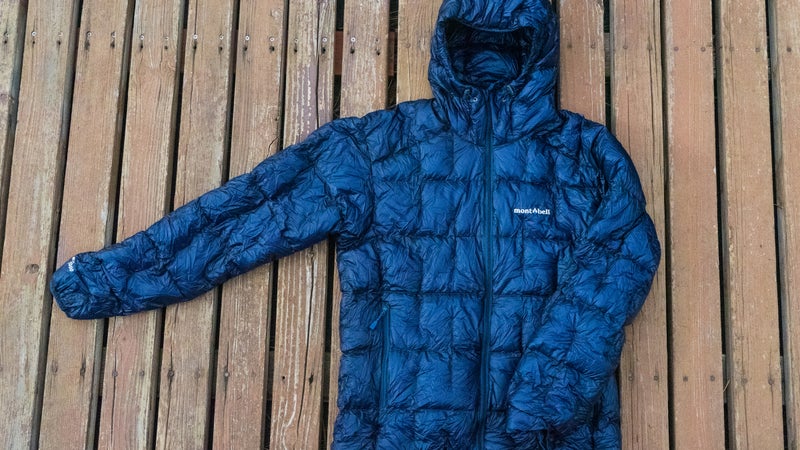
Best For: Shoulder-season backpacking
Weight: 8.4 ounces (menÔÇÖs medium)
Down Weight: 3.4 ounces
Optimal Temperature Range:╠ř45 to 25╠řdegrees Fahrenheit
While the down weight╠řof the Mont Bell is similar to that of the Eddie Bauer, the baffle design of the╠ř stacks the down a little thicker, making it noticeably puffier and warmer than the Mountain Hardwear╠řor Eddie Bauer╠řjackets. It was my go-to puffy for winter backpacking trips in the desert: I╠řtook it down Little Death Hollow to the Escalante River in Utah, where morning temperatures╠řdidnÔÇÖt creep beyond the high thirties. It was also a comfortable jacket for ski transitions on days when the mercury dipped to the low thirties. The seven-denier face fabric feels a little crinkly╠řand lightweight and was just as delicate as the Ghost WhispererÔÇÖsÔÇöI grazed the cuff over a coarse boulder while hiking along the Escalante and introduced a small tearÔÇöbut the warmth-to-weight ratio of the Plasma is nearly the best of the jackets I╠řtested. The whole thing packs down to slightly smaller than a 32-ounce Nalgene.
Rab Zero G ($550)
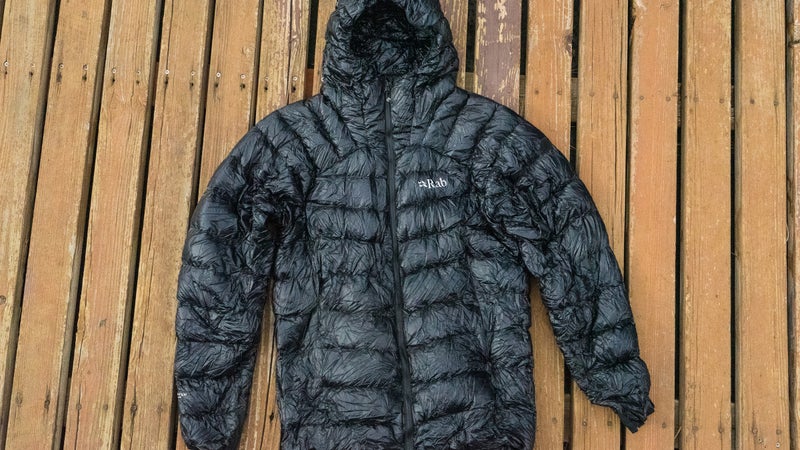
Best For: Super-cold adventures
Weight: 10 ounces (menÔÇÖs medium)
Down Weight: 4.05 ounces
Optimal Temperature Range:╠ř35 to 15 degrees Fahrenheit
Bigger puffies like RabÔÇÖs are where the value of 1,000-fill down becomes more apparent. With additional╠řdown on the inside (it uses more than twice the down of the Ghost Whisperer), the weight difference between a similarly warm 800-fill jacket could be a lot more obvious. The Zero G was warm enough as an ice-climbing belay jacket or a puffy for full-on winter backpacking up MontanaÔÇÖs Hyalite Canyon. The trade-off, though, is that additional╠ř1,000 fill makes this the most expensive jacket I╠řtestedÔÇöby more than $110.
The Zero G quickly became my preferred winter puffy on days when the digits╠řdropped well below freezing.╠řThanks to a ten-denier face fabric, it stayed surprisingly intact (I put one small nick in the body with an errant ice screw in my backpack), even though it saw more use than any of its competitors.


